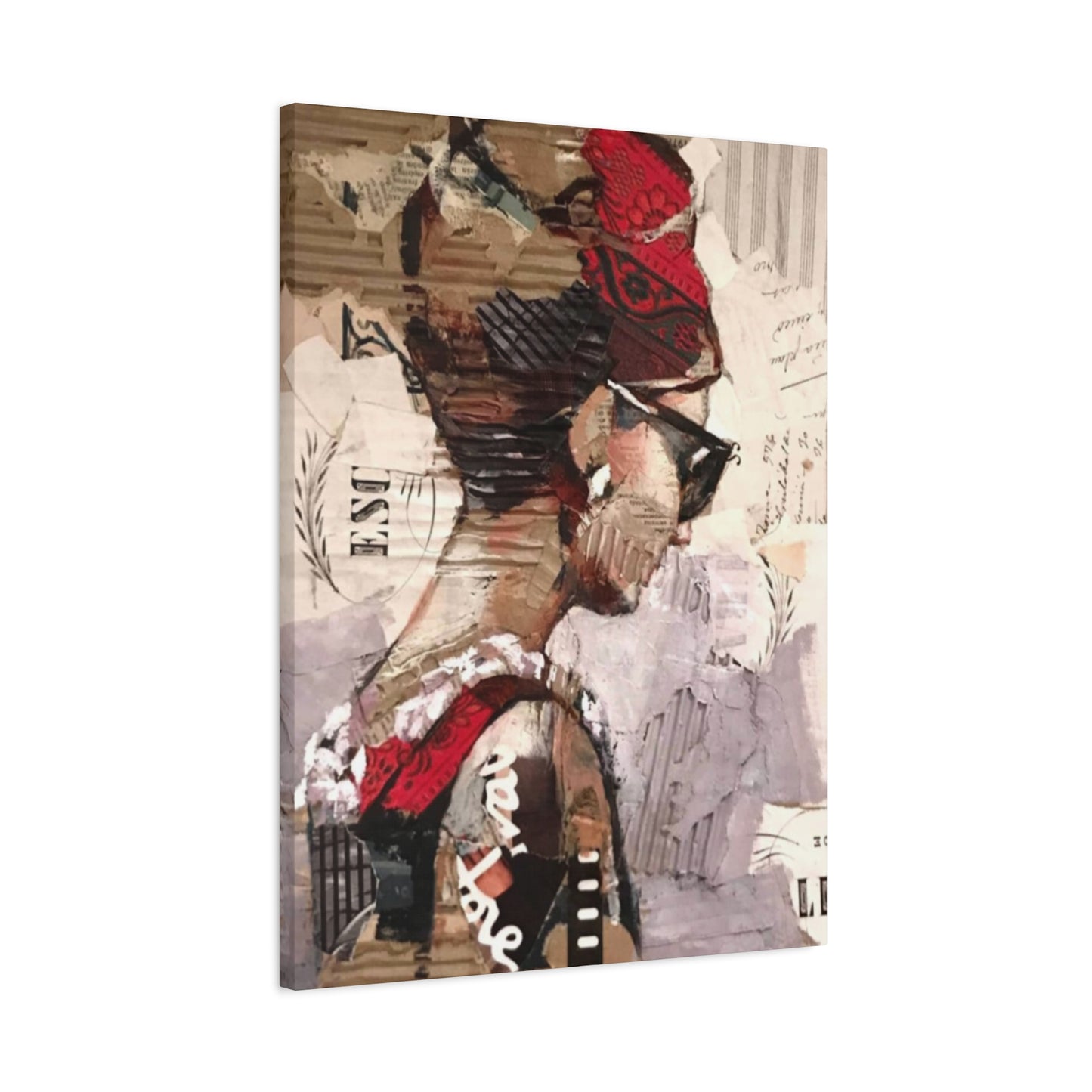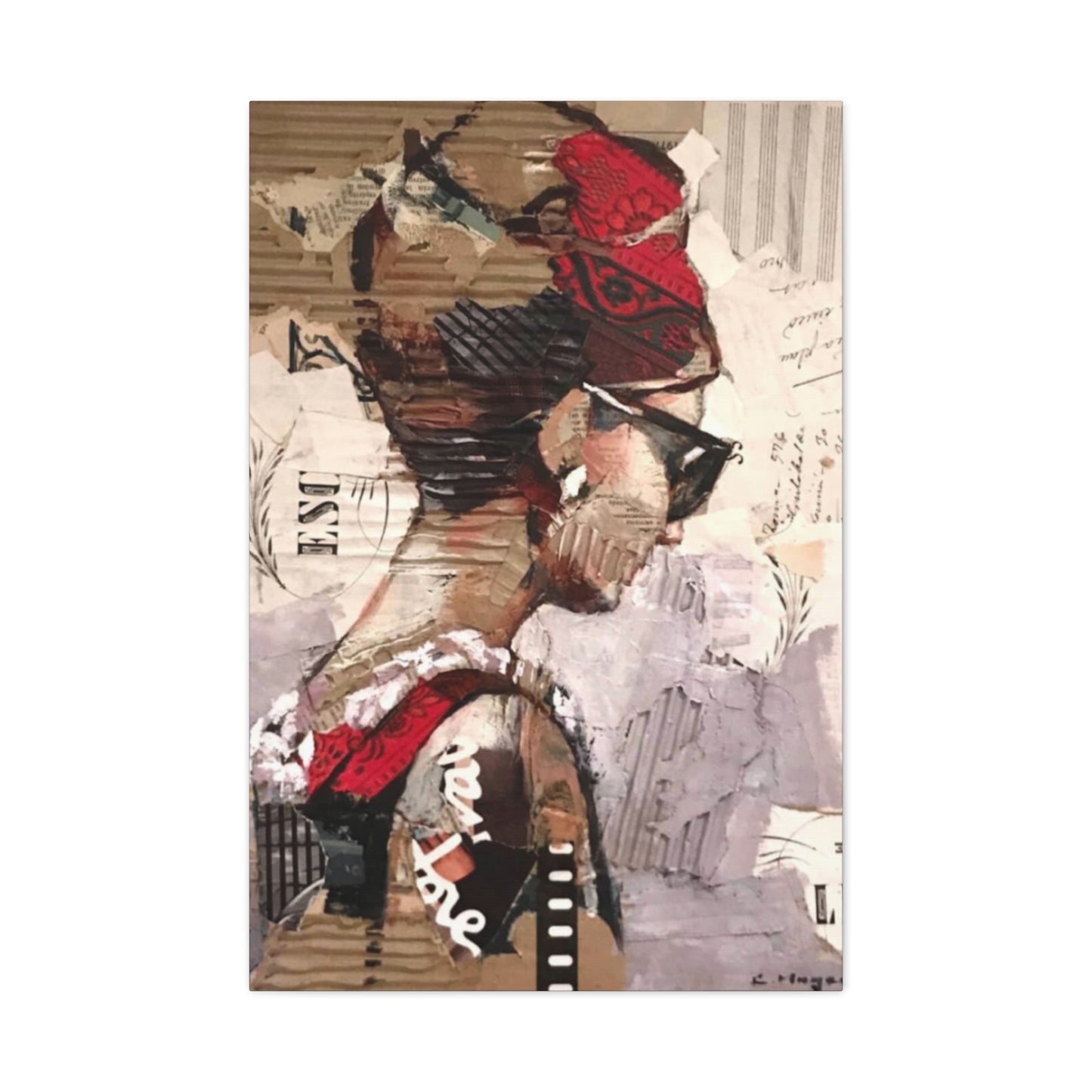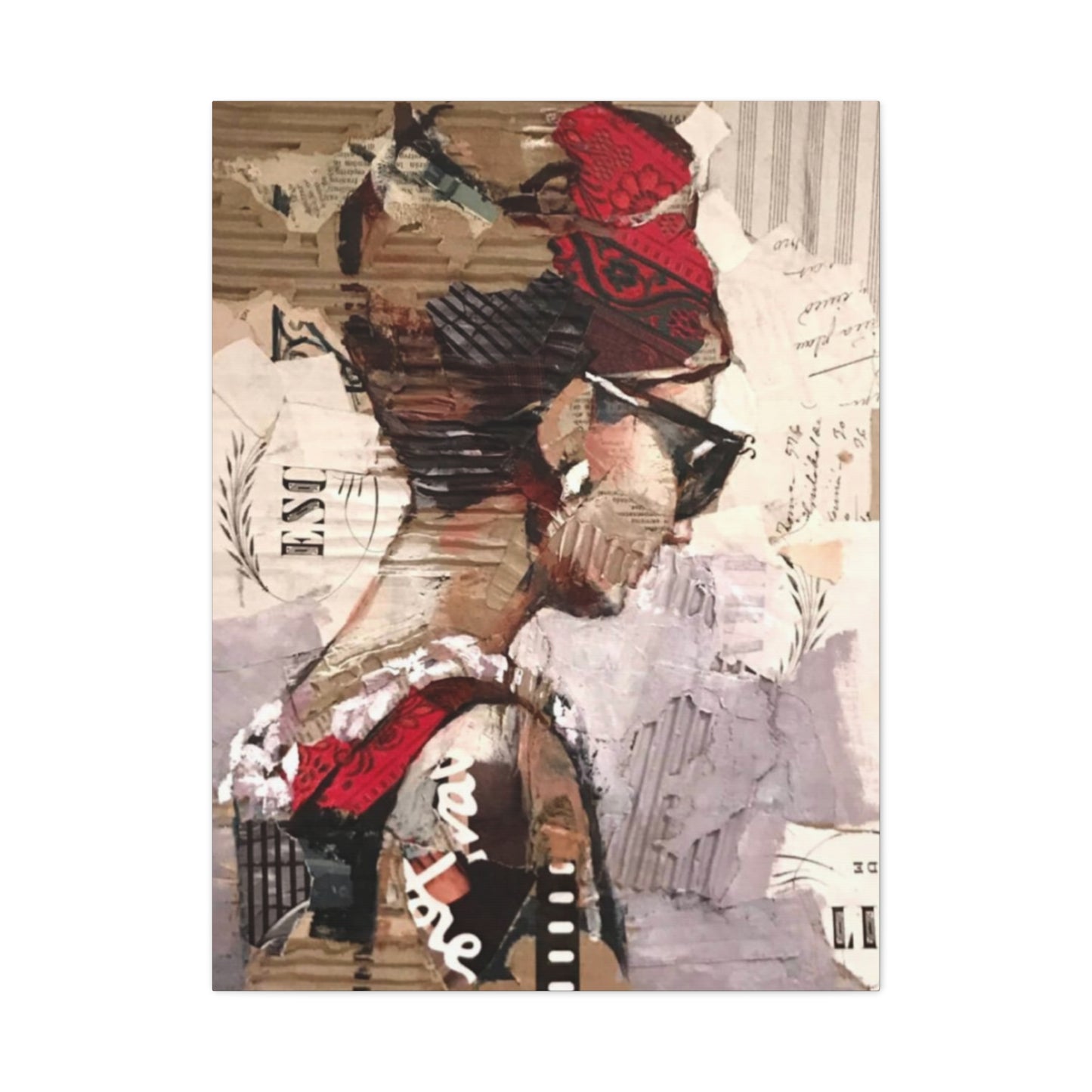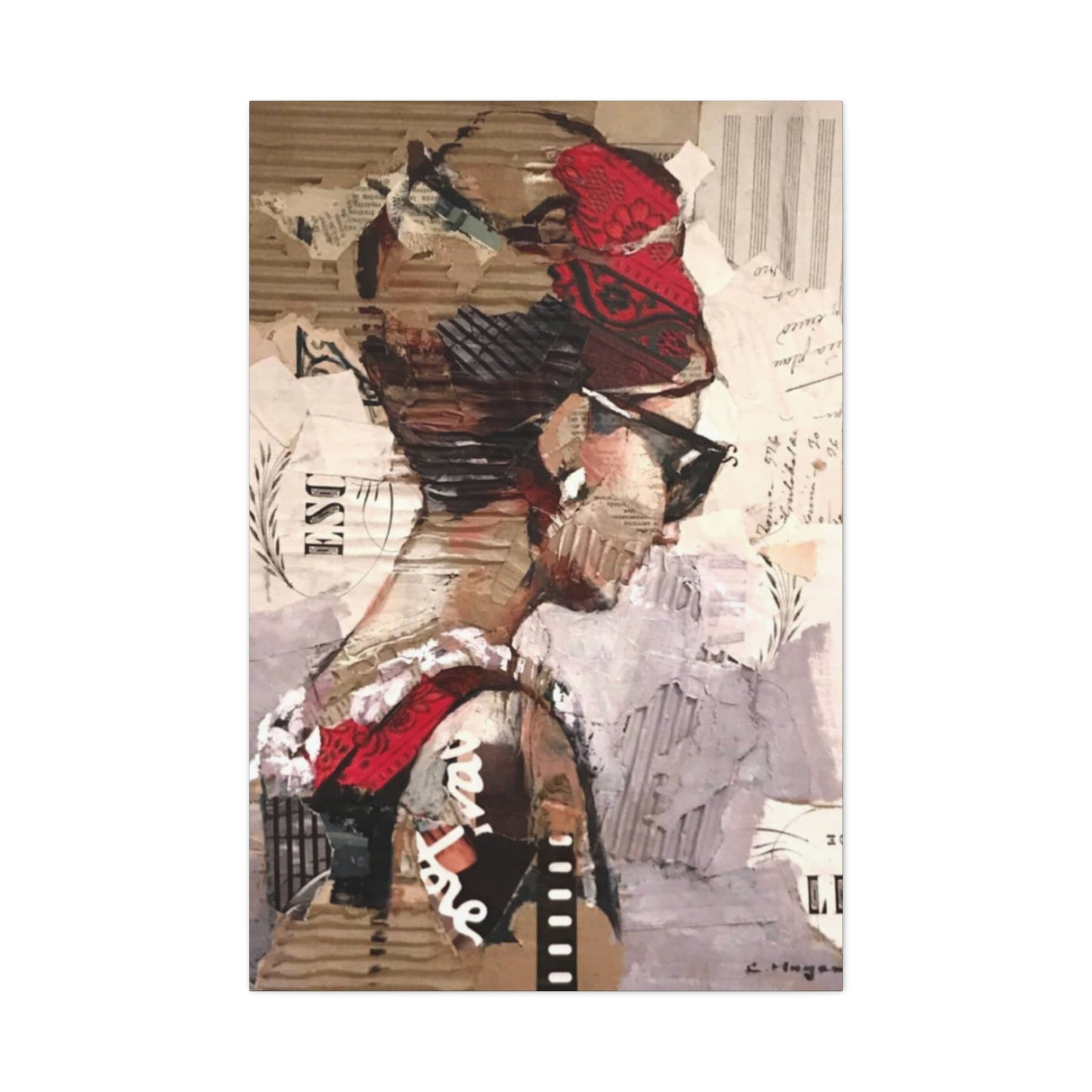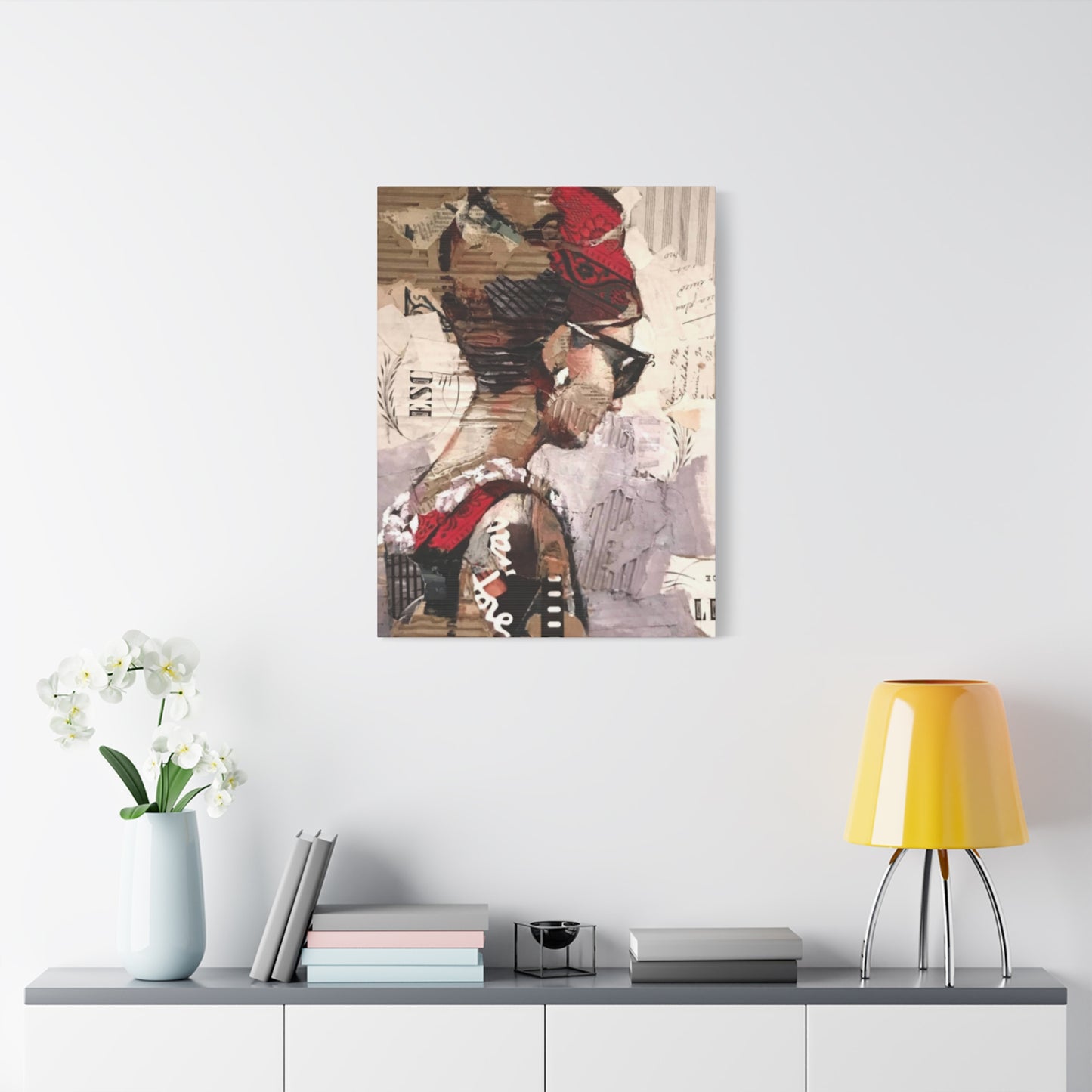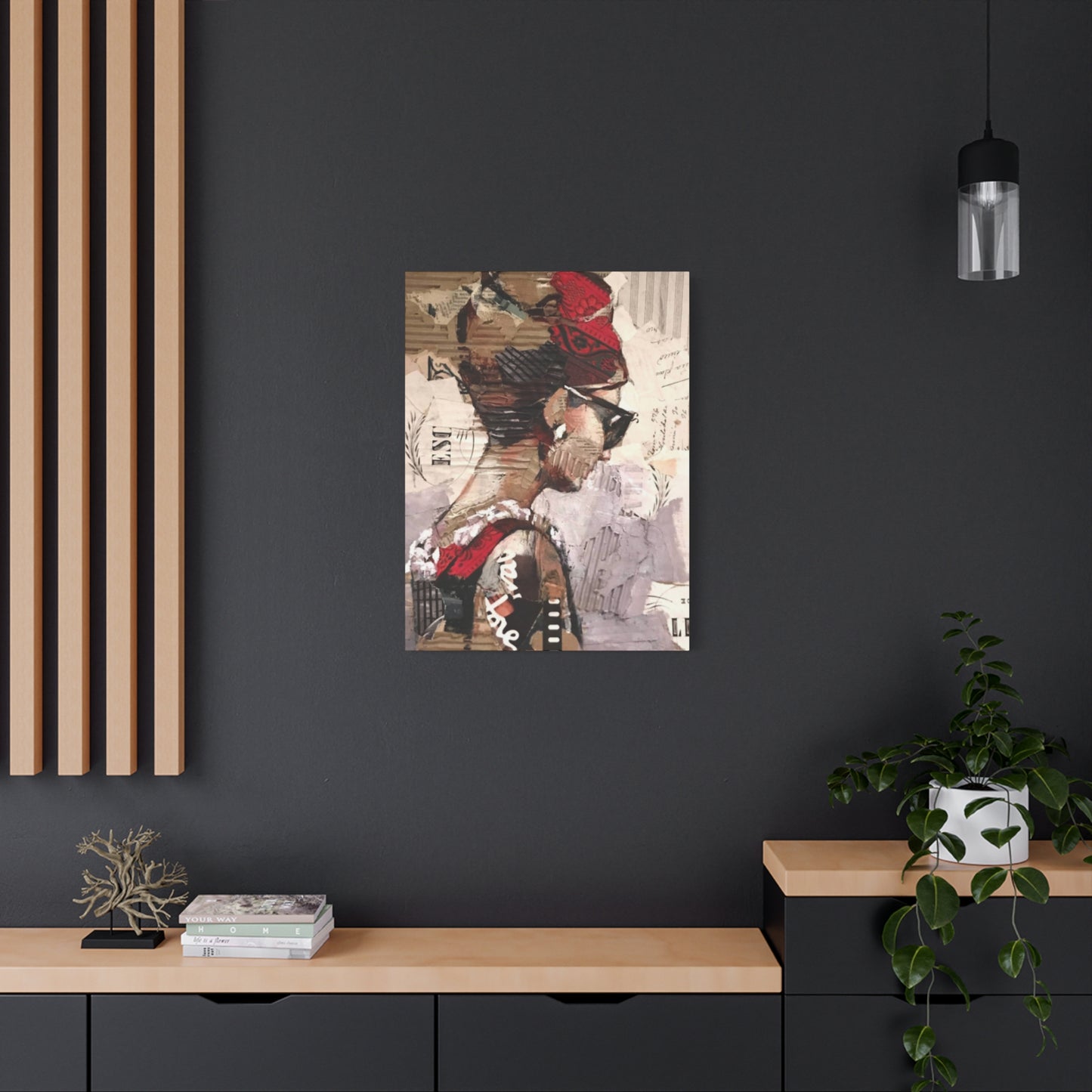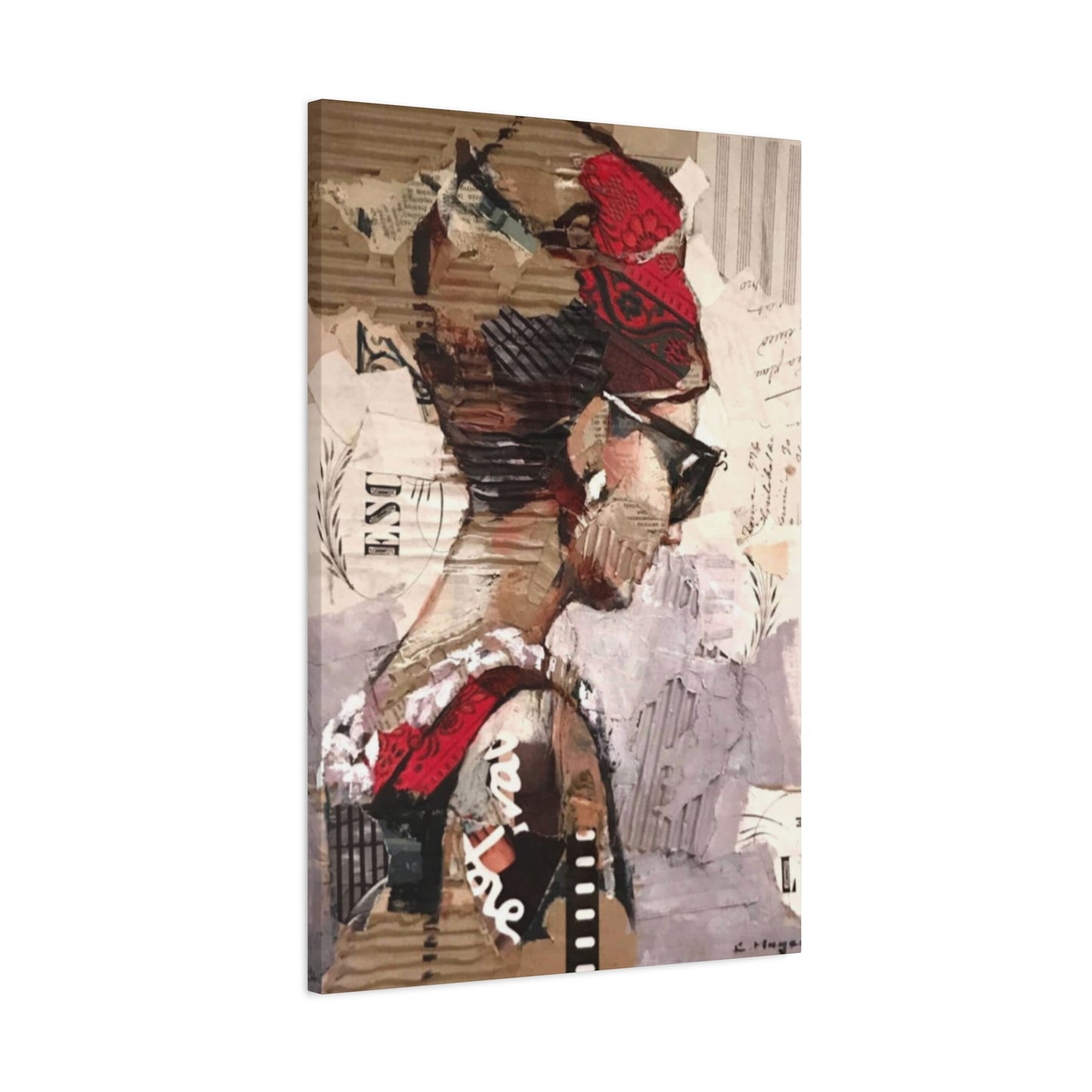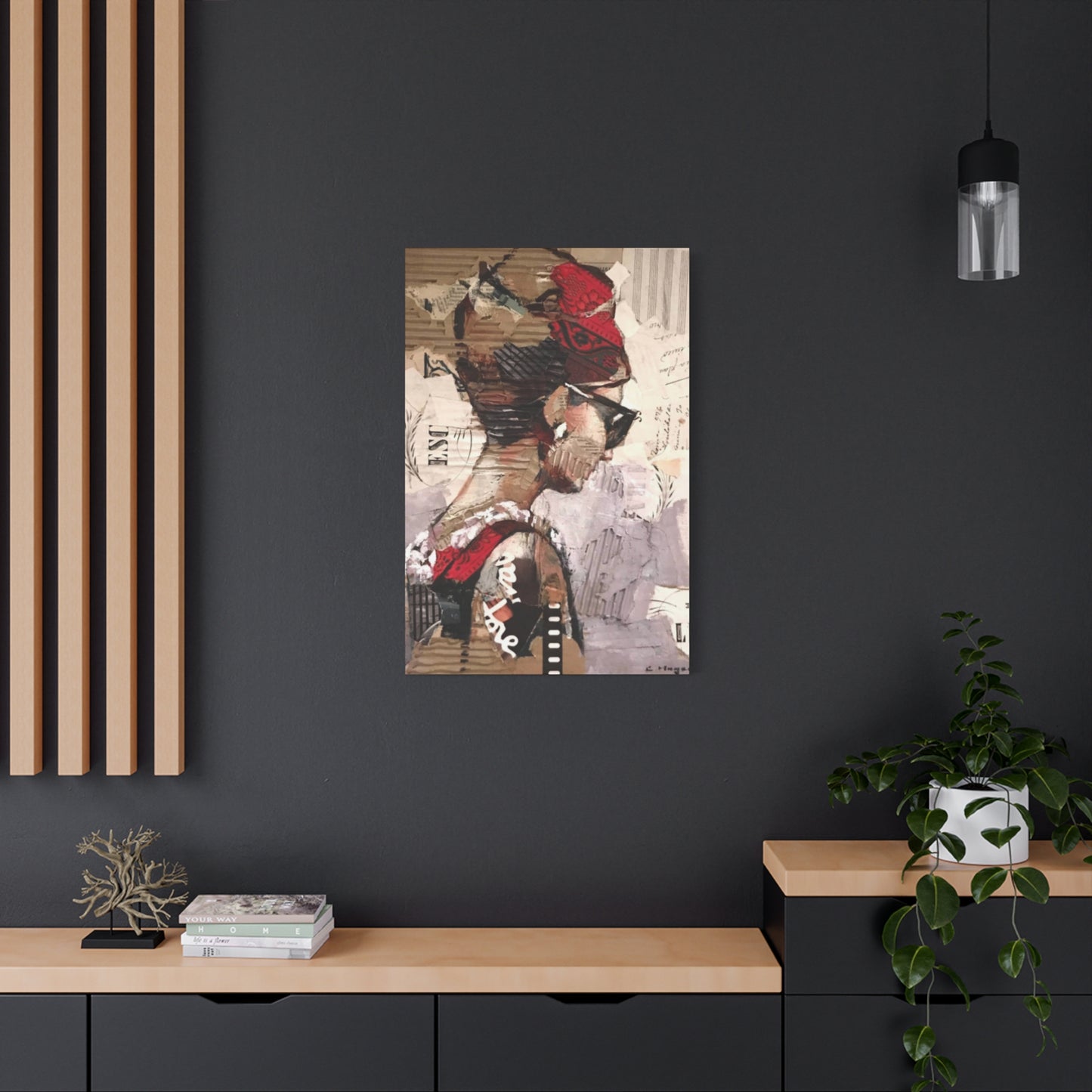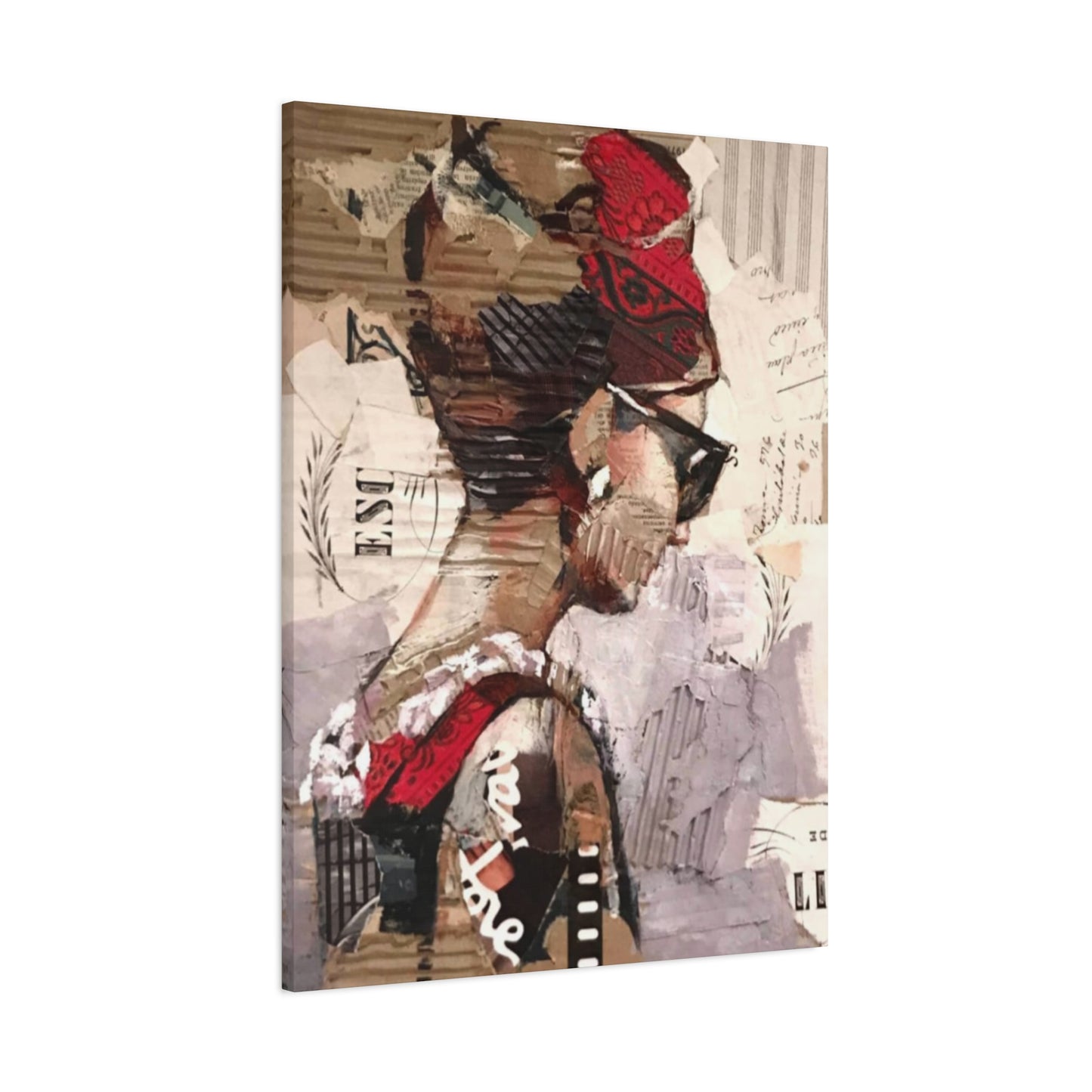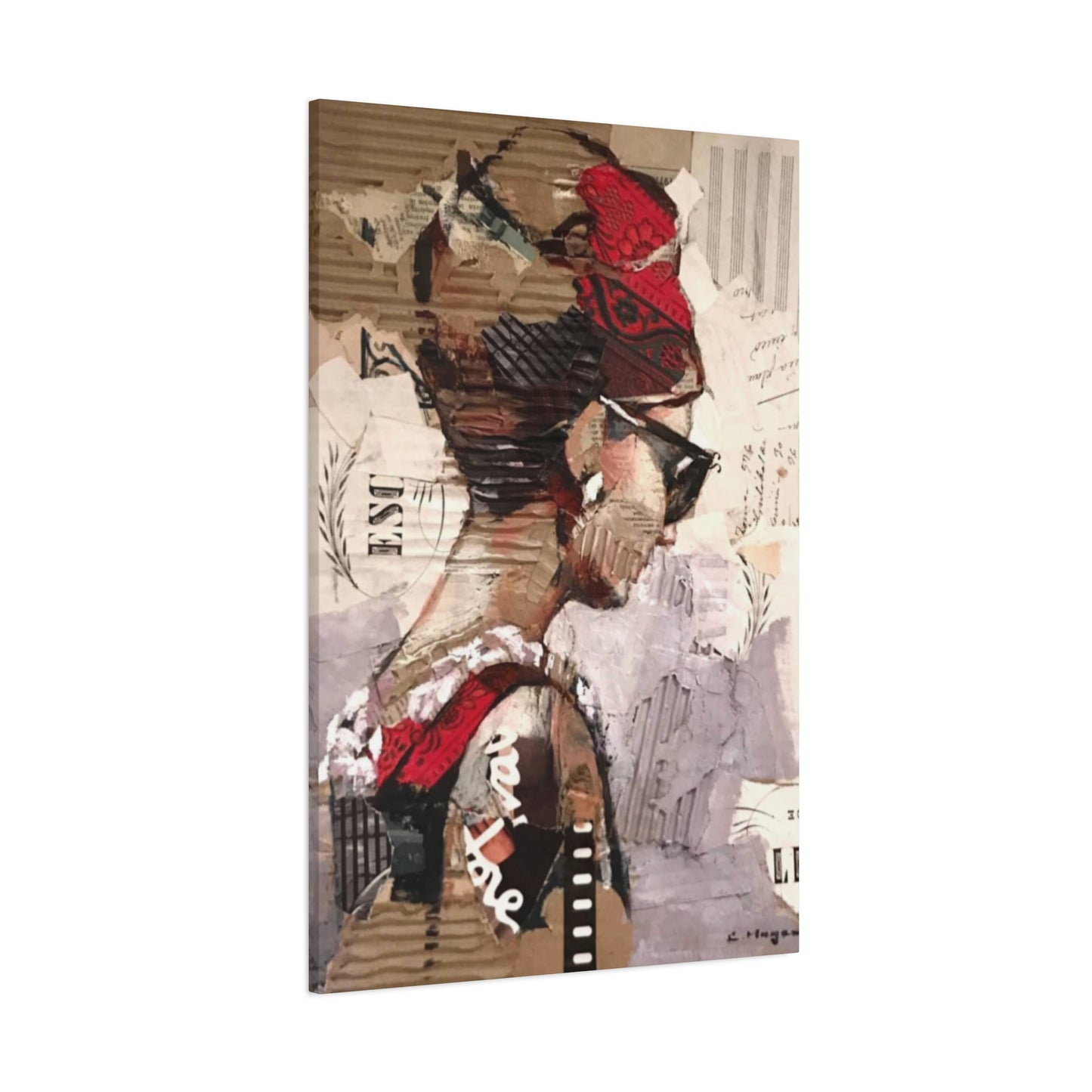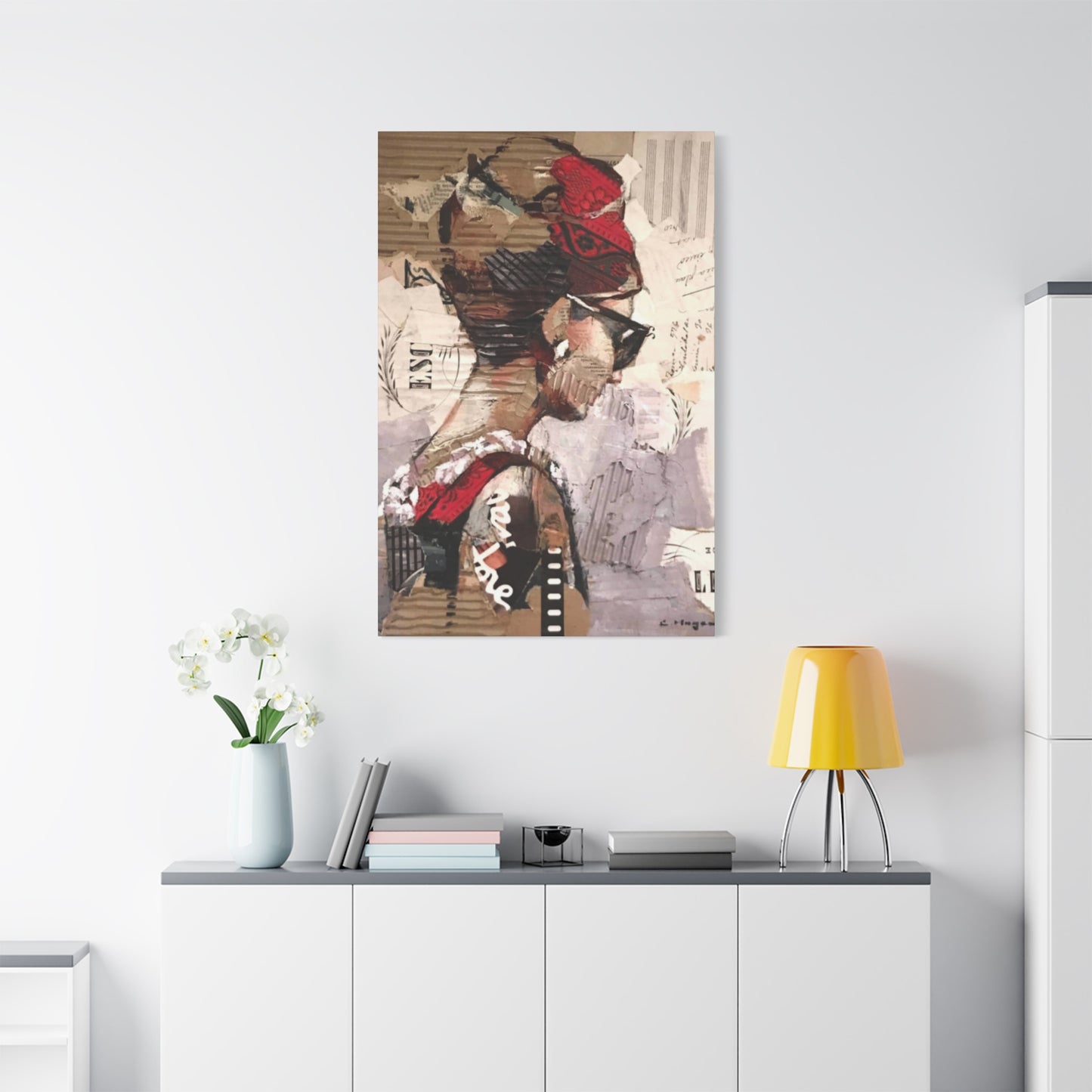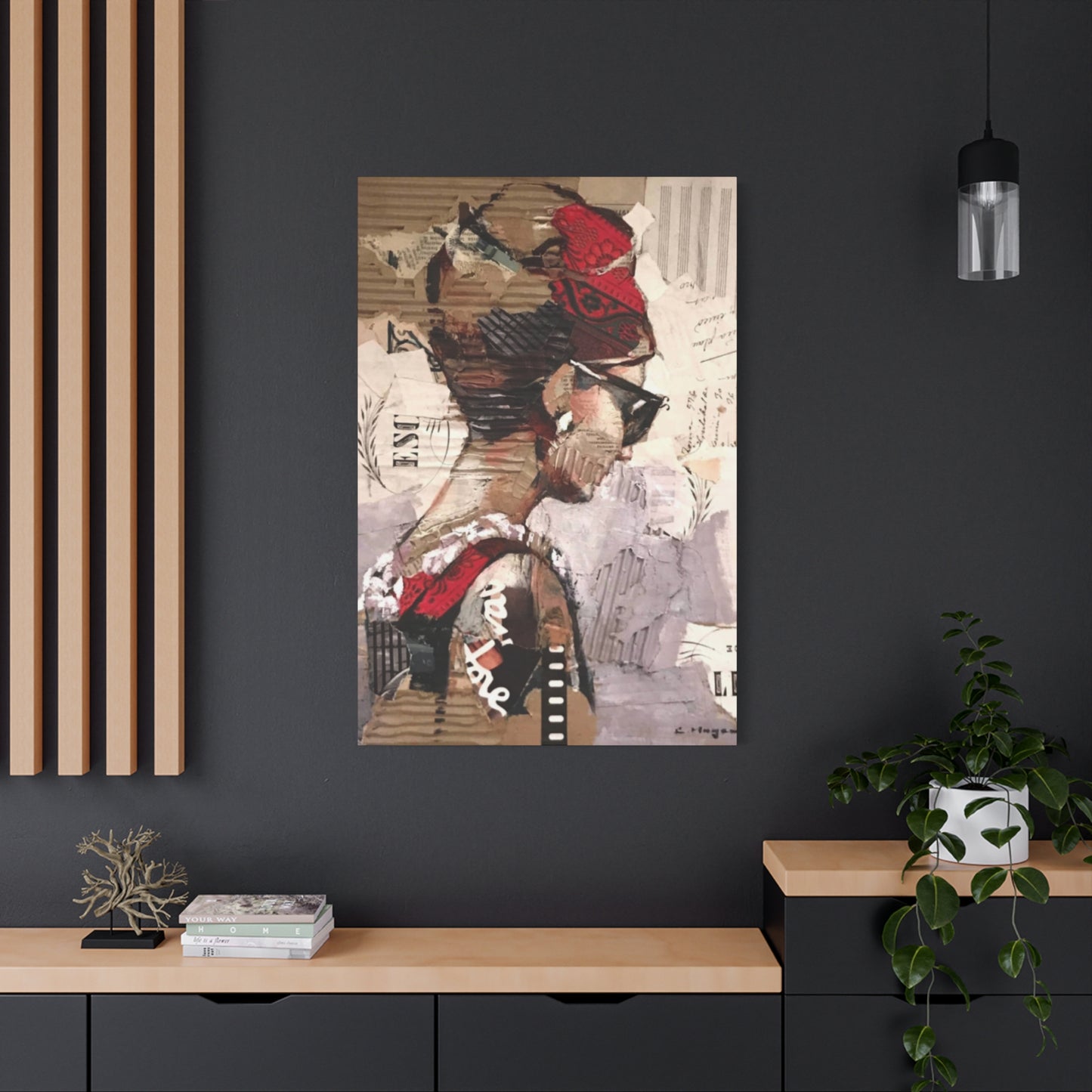Feminine Forms and Textured Narratives: A Journey into Women Abstract Mixed Media Wall Art
The desire to transform a living space into a reflection of one's inner world is a deeply human pursuit. We seek more than just decoration; we seek connection, conversation, and inspiration. In the vast universe of interior design, one genre stands out for its profound depth, emotional resonance, and tactile complexity: Women Abstract Mixed Media Wall Art. This is not merely a category of art; it is a powerful form of storytelling that uses texture, color, and form to explore themes of identity, energy, and the female experience. Unlike traditional portraiture, it does not seek to capture a literal likeness but rather an internal essence. It moves beyond the limitations of a single medium, embracing the chaos and beauty of combining materials to create something new. This art form invites the viewer to look closer, to feel the layers, and to find their own meaning within the intricate compositions. As we delve into this captivating world, we uncover a rich tapestry of technique, meaning, and personal expression that makes each piece a unique dialogue between the artist and the observer.
Defining Women Abstract Mixed Media Wall Art
To truly appreciate this genre, we must first break down its descriptive name. "Women" signifies the core focus, subject, or creative force. The art is either created by female artists, explores themes central to the female experience, or represents feminine energy and forms. This focus is crucial, as it filters the entire creative process through a specific lens of identity, history, and perspective. "Abstract" indicates a departure from literal, photographic representation. Instead of depicting a recognizable person or scene, the art uses color, shape, line, and form to convey emotion, ideas, or sensations. This abstraction is a deliberate choice, offering a language more suited to expressing the intangible—concepts like resilience, intuition, vulnerability, or the subconscious mind. "Mixed Media" is the technical heart of the genre.
It describes the practice of using multiple materials on a single substrate. This could involve combining acrylic paint with collage elements, embedding textiles or fibers, adding found objects, layering gels for texture, or using ink over photographic transfers. The possibilities are infinite, and this material diversity allows the artist to build literal and metaphorical layers of meaning. Finally, "Wall Art" defines its purpose and form. These are pieces designed to be displayed on a vertical surface, transforming a room's atmosphere and serving as a significant focal point for contemplation and aesthetic enjoyment. Together, Women Abstract Mixed Media Wall Art represents a fusion of identity-driven narrative, non-literal expression, and complex material experimentation.
The Essence of Abstraction in Feminine Art
Abstraction offers a unique and liberated language for artists exploring feminine themes. For centuries, the female form in art was largely defined by the male gaze, depicted as an object of beauty, passivity, or allegory. Abstract art shatters this paradigm. It allows the artist to bypass the literal body and instead communicate the experience of having a body, the feeling of an emotion, or the energy of an identity. It is a shift from external representation to internal expression. For many female artists, abstraction becomes a tool of empowerment. It provides a way to discuss complex, often non-verbal experiences—such as intuition, the cycles of nature and life, deep-seated emotional states, or the non-linear, multifaceted nature of thought and memory. A splash of crimson may not be a flower, but the feeling of passion or pain. A series of soft, curving lines might evoke nurturing and connection, while sharp, fragmented shapes could speak to societal pressures or internal conflict. This form of expression is inherently personal and intuitive, both for the creator and the viewer. It rejects rigid definitions and invites a more fluid, sensory engagement. In the context of Women Abstract Mixed Media Wall Art, abstraction is the vehicle that carries the profound, unspoken narratives of female life, making them visible and tangible in our living spaces.
Exploring the "Mixed Media" Component
The "mixed media" aspect of this art form is what gives it its incredible tactile and visual depth. It is a testament to the idea that a single medium is often insufficient to capture the complexity of the intended subject. Life itself is layered, textured, and composed of disparate parts, and mixed media art mirrors this reality beautifully. An artist might begin with a canvas, layering it with gesso or modeling paste to build a sculptural, foundational texture. Over this, she might apply thin washes of acrylic paint, allowing colors to blend and drip, suggesting a history beneath the surface. Following this, she could introduce collage elements—perhaps fragments of old letters, sheet music, or dress patterns, hinting at memory, language, and personal history. Delicate, hand-dyed silks or rough burlap fibers might be embedded into the wet paint, contrasting softness with coarseness. Gold or silver leaf could be applied to catch the light, suggesting moments of clarity or divinity. Even found objects, like a rusted key or a dried seed pod, can be incorporated, grounding the abstract composition in the tangible world. This process of addition, subtraction, and integration is intensely physical. Each material choice is deliberate, carrying its own symbolic weight. This is why Women Abstract Mixed Media Wall Art is so engaging; it appeals not just to our sense of sight, but to our imagined sense of touch, drawing us in to explore its intricate, multi-faceted surfaces.
Why Wall Art Remains a Powerful Medium
In an age of digital screens and ephemeral content, the physical, permanent presence of wall art holds more power than ever. A piece of art on a wall is not a fleeting image; it is a resident. It shares your space, greets you in the morning, and bears witness to your life. It has the unique ability to completely transform the atmosphere of a room, acting as its soul and emotional anchor. A large, dynamic piece of Women Abstract Mixed Media Wall Art can inject energy and passion into a living room, sparking conversation and debate. A softer, more ethereal piece can create a sanctuary of calm and introspection in a bedroom or study. Unlike purely digital art, mixed media wall art engages with the physical environment. The way natural light hits the textured surfaces in the morning is different from the way it's illuminated by a lamp at night. The shadows cast by its three-dimensional elements shift, making the piece feel alive and constantly evolving. This physical permanence creates a lasting relationship. The art becomes a familiar companion, and over time, the viewer may discover new details, new interpretations, and new emotional connections. It is an investment in your environment and, by extension, in your own well-being. It serves as a daily reminder of beauty, complexity, and the power of human creativity.
The Intersection of Female Identity and Abstract Expression
The dialogue between female identity and abstract expression is one of the most compelling aspects of this genre. Abstract expressionism, historically dominated by male figures, is reclaimed and reframed by women artists to tell their own stories. They use its gestures, colors, and forms to explore the multifaceted nature of what it means to be a woman. This can manifest in countless ways. Some artists may use bold, aggressive brushstrokes and stark, industrial materials to deconstruct stereotypes of femininity as soft or passive. Others might use delicate layering, organic shapes, and a palette drawn from nature to celebrate concepts like nurturing, intuition, and the connection to natural cycles. The art can be a form of visual journaling, a way to process personal and collective experiences. A piece of Women Abstract Mixed Media Wall Art might explore the fragmentation of identity that comes from juggling multiple roles—mother, partner, professional, creator. This could be represented through pieced-together collage elements, fractured lines, or sections of the canvas that feel distinct yet interconnected. It can also be a space for healing, where past traumas or societal wounds are transformed into something beautiful and strong, with layers of paint covering, but not entirely obscuring, what lies beneath. This art is not a monolithic statement; it is a spectrum of individual voices, each using the language of abstraction to map the intricate, beautiful, and complex terrain of female identity.
Representing Feminine Energy in Abstract Forms
How does one paint an energy? This is the challenge and the beauty of abstract art. "Feminine energy," often associated with concepts like intuition, fluidity, creativity, connection, and the cyclical nature of life, finds powerful expression in non-literal forms. In Women Abstract Mixed Media Wall Art, this is often visible through the prevalence of organic, curving lines rather than rigid, geometric angles. Think of the flow of water, the curve of a hip, the unfurling of a petal, or the spiral of a galaxy—these shapes suggest movement, growth, and adaptability. Circular and ovoid forms are also common, symbolizing wholeness, the womb, the egg, and cycles like the moon or the seasons. The composition itself might feel less hierarchical and more integrated, with elements flowing into one another, suggesting connection and community over individual isolation. Color plays a vital role. While stereotypical "feminine" palettes of pinks and pastels can be used, contemporary artists often subvert or expand this. Feminine energy can be the fierce, protective red of a mother, the deep, intuitive indigo of the night sky, or the life-giving, earthy tones of clay and terracotta. The "mixed media" aspect adds another layer, with soft materials like fiber and textiles directly referencing a history of women's craft, while the very act of layering mirrors the deep, multifaceted, and often hidden depths associated with feminine wisdom.
The Role of the Female Gaze in Mixed Media Creation
The concept of the "female gaze" is pivotal in understanding this art form. For most of art history, the dominant perspective has been the "male gaze," where women are depicted as passive objects for male viewing. The female gaze flips this script entirely. It is not about how women look, but about how women see. It is the subjective, internal, and lived experience of the artist being made visible. In Women Abstract Mixed Media Wall Art, this translates into a focus on sensory and emotional experience rather than physical appearance. The art may explore the feeling of the body from the inside out—the sensation of breath, the pain of childbirth, the rhythm of a heartbeat. It prioritizes themes that may have been historically dismissed as "domestic" or "unimportant" and elevates them to subjects of profound artistic inquiry: themes like sisterhood, memory, generational trauma, healing, and the spiritual connection to nature. The use of mixed media is itself an act of the female gaze. The inclusion of materials like thread, fabric, buttons, or scraps of lace—items often associated with "women's work" or craft—is a political and personal statement. It reclaims these materials, insisting that they are as valid and powerful for high art as oil paint or marble. This art does not ask for the viewer's approval; it demands the viewer's engagement, empathy, and willingness to see the world from a different, deeply felt perspective.
Motherhood and Nurturing Themes in Abstract Art
Abstract art provides a uniquely potent language for exploring the profound, complex, and often contradictory experiences of motherhood and nurturing. These are themes that defy simple, literal representation. How does one paint the overwhelming rush of protective love, the profound exhaustion, the loss of self, and the simultaneous discovery of a new, expanded identity? In Women Abstract Mixed Media Wall Art, these concepts are translated into a sensory language. Forms of enclosure are common—shapes that cradle or protect other, smaller shapes within them. We might see compositions that are centered around a core, a glowing light, or a nest-like structure built from fibers and collage. The physical act of layering in mixed media becomes a powerful metaphor. The layers can represent the layers of family, of generations, of the self that are built up around the act of nurturing. Texture can convey the grit and the softness, the simultaneous mess and beauty of child-rearing. An artist might use rough sand mixed with paint alongside smooth, polished stones. The theme is not always serene; abstract expressionism allows for the chaos. Frenetic lines, clashing colors, and a sense of overwhelm can honestly depict the challenges, the sleepless nights, and the mental load. This art validates the full spectrum of the experience, moving far beyond the idealized, serene depictions of mother and child, and offering a raw, honest, and deeply emotional portrayal of nurturing in all its forms.
Depicting Female Strength and Resilience
Strength and resilience are cornerstone themes in art that centers the female experience. Abstract art offers a way to depict this strength not as a physical, muscular attribute, but as an internal, enduring force. In Women Abstract Mixed Media Wall Art, resilience is often communicated through the materials and the process itself. We see it in distressed surfaces that have been sanded, scratched, and weathered, yet still hold their composition. We see it in the use of "lowly" or discarded materials—like rusted metal, torn paper, or frayed fabric—that are transformed and integrated into a beautiful, cohesive whole. This is a powerful metaphor for survival and transformation. Strength can be shown through bold, assertive mark-making, with lines that cut across the canvas with intention and power. It can be present in a color palette that is unapologetically vibrant and strong, refusing to be quiet or subdued. Compositionally, strength might be represented by a strong vertical or horizontal element that grounds the entire piece, an anchor in the midst of more chaotic, swirling forms. Resilience is also about layering. The artwork may reveal glimpses of under-layers, suggesting a deep history that has been built upon, not erased. The final surface is a testament to everything it has endured. This art doesn't just show a "strong woman"; it embodies the very process of becoming strong, of enduring, mending, and continuing to radiate beauty.
Vulnerability as a Subject in Women's Art
Just as abstract art can portray strength, it is also a uniquely sensitive medium for exploring vulnerability. In a world that often pressures women to be perpetually strong and capable, the act of expressing vulnerability is a form of courage and honesty. In Women Abstract Mixed Media Wall Art, this theme is handled with nuance and poignancy. Vulnerability can be seen in the materials themselves: the use of delicate, translucent papers that could easily tear, the inclusion of fragile threads that seem to hang precariously, or the application of soft, watercolor-like washes that feel exposed. Torn edges in collage work, rather than being hidden, are often emphasized, symbolizing fractures, wounds, or the beauty of imperfection. An artist might use negative space to create a feeling of emptiness or longing, a quiet pause in a busy composition. The color palette might be subdued, relying on skin tones, pale blues, and soft grays to evoke a senseof quiet intimacy and introspection. Sometimes, vulnerability is shown through exposed "underpinnings" of the artwork—the raw canvas, the penciled-in guide lines, or the unpainted staples on the side. This act of "showing the work" and revealing the process is a form of vulnerability in itself. It is an invitation to the viewer to connect on a deeply human level, acknowledging that fragility and strength are not opposites, but are deeply, intrinsically intertwined in the female experience.
Sisterhood and Female Relationships Explored
Beyond the individual, abstract mixed media art is a beautiful canvas for exploring the intricate web of female relationships. The theme of sisterhood, friendship, and collective support is a recurring and vital one. An artist might represent this theme through interconnected forms. Instead of a single, central figure, the composition might be made of multiple, distinct shapes that touch, overlap, and support one another. These forms might share a common color palette or be linked by a continuous line that weaves through the entire piece, symbolizing a shared bond or journey. Texture can also play a role; a section of the artwork might be composed of many different pieces of fabric, each with its own pattern and texture, stitched together to create a cohesive whole—a clear metaphor for a community of unique individuals. The "mixed media" aspect allows for the inclusion of materials that suggest shared history, such as fragments of handwriting from letters, snippets of maps from places traveled together, or pressed flowers that recall a shared memory. The energy of these pieces is often one of harmony and balance, even if the individual elements are dynamic. There is a sense of conversation between the parts. This type of Women Abstract Mixed Media Wall Art celebrates the collective, serving as a powerful reminder that female strength is often not a solitary endeavor, but a communal one.
The Body as Landscape in Abstract Mixed Media
A fascinating and recurring motif in feminine abstract art is the treatment of the female body not as an object, but as a landscape. This perspective shift is profound. A landscape is something to be explored, not just viewed; it has hidden depths, changing seasons, and a life force of its own. In Women Abstract Mixed Media Wall Art, this concept is brought to life through texture and form. The curves of the body are mirrored in the rolling hills or soft valleys of a composition. An artist might use sand, grit, or thick impasto to create a tactile surface that mimics the texture of earth, stone, or skin itself. Colors are often drawn from nature—deep earth tones, watery blues, and foliage greens—directly linking the female form to the body of the Earth. This connection is often a core tenet of ecofeminism, suggesting a shared experience of being a life-giving, nurturing force that is also vulnerable to exploitation. We might see lines that resemble rivers, cracks in dry earth, or the intricate branching of veins or tree roots. By abstracting the body into a landscape, the artist moves it away from a purely sexualized context and into a more elemental, spiritual, and powerful one. It becomes a map of experience, a place of origin, and a sacred, living terrain.
The Power of Feminine Abstract Narratives
The journey through the world of Women Abstract Mixed Media Wall Art is a journey into depth, texture, and profound storytelling. As we have seen, this genre is far more than a simple decorative choice. It is a vibrant and evolving language used by artists to explore the most intricate, personal, and universal aspects of the female experience. From the empowered perspective of the female gaze to the abstract representations of motherhood, strength, and vulnerability, this art form provides a necessary and powerful counter-narrative to centuries of art history. It rejects simple definitions and celebrates complexity. The "mixed media" element is not a gimmick; it is a vital metaphor for a layered life, for the piecing together of disparate parts—memory, trauma, joy, and identity—into a cohesive, resilient, and beautiful whole.
When you choose to hang a piece of Women Abstract Mixed Media Wall Art in your home, you are doing more than filling a space. You are inviting a conversation. You are installing a focal point for contemplation that will change with the light, reveal new secrets over time, and resonate with your own lived experiences. This art has the power to create an atmosphere, whether it's the calming energy of a piece exploring sisterhood and nature, or the dynamic, assertive power of a composition that speaks to strength and resilience. It is a daily reminder of the value of intuition, the beauty of imperfection, and the strength found in vulnerability.
The future of this genre is bright and boundless. As more female artists gain visibility and platforms to share their work, the definitions and materials will continue to expand. We will see further integration of digital media, sustainable and reclaimed materials, and cross-cultural narratives that enrich the conversation. This art is a living document, a testament to the fact that the female story is not one, singular narrative, but an infinite, interconnected tapestry. By supporting and engaging with this work, we not as viewers do not just appreciate art; we participate in a crucial movement of expression, empowerment, and recognition. The value of this art lies in its ability to make us feel, to make us think, and to reflect back to us the complex, layered, and powerful essence of human identity. It is, in its truest form, a piece of a soul made tangible, offered to the world to be seen, felt, and understood.
Stag Art from Ancient Cave Paintings to Modern Fine Art
The fascination with the stag is not a contemporary trend; it is a profound historical connection that spans human civilization, imbuing every piece of Regal Stag Reverie Canvas Wall Art with deep historical weight. To understand the power of this art form today, one must trace the stag's image back to its earliest depictions. The majestic stag is one of the most frequently and skillfully depicted subjects in Paleolithic cave art, such as in Lascaux and Altamira. Here, the animal was captured with stunning accuracy and vitality, symbolizing survival, the spirit of the hunt, and the critical link between humanity and the natural world. These prehistoric representations established the stag's image as one of profound respect and necessity, setting the foundational reverence for its form.
As societies evolved, the stag transitioned from a symbol of sustenance to a powerful mythological and religious motif. In medieval Europe, the stag was highly valued in heraldry, representing nobility, swiftness, and purity, and was often the central figure in grand tapestries and illuminated manuscripts. The antlers, shedding and regrowing annually, were intrinsically linked to themes of resurrection, Christ, and the regenerative cycles of time. During the 17th and 18th centuries, hunting scenes featuring the stag became a staple of aristocratic portraiture and large oil paintings, often emphasizing the social status of the hunter rather than the inherent majesty of the animal.
However, the modern fine art movement, particularly as it relates to canvas wall art, has stripped away the aristocratic association and returned to the primal, spiritual reverence for the stag. Contemporary artists capturing the Majestic Wilderness Embodied now focus almost exclusively on the stag in its solitude and reverie. This shift reflects a modern cultural desire to reconnect with nature, to find peace in the wild, and to celebrate the creature's intrinsic beauty and power rather than its value as a trophy. Thus, when a viewer gazes upon a piece of modern Regal Stag Reverie art, they are unconsciously engaging with a lineage of artistic respect that stretches back tens of thousands of years, making the artwork a truly timeless and deeply resonant cultural touchstone in any home. The enduring presence of the stag across every major period of human art speaks volumes about its power as a symbol of the untamed spirit.
Dynamics of Depicting More Than One Majestic Creature
While the classic Regal Stag Reverie Canvas Wall Art often features a singular, contemplative subject, the composition featuring two or more majestic creatures introduces an entirely different, powerful dynamic. The shift from an isolated reverie to an interactive scene transforms the emotional and visual impact of the canvas wall art, creating a compelling narrative that captivates the viewer. Depicting a pair of stags, especially in close proximity, most commonly focuses on the theme of challenge and dominance—the intense, ritualistic behaviors associated with the autumn rut. An artist portraying this dynamic must master the rendering of raw energy, capturing the tension in the animals’ musculature, the forceful lock of their antlers, and the atmosphere of a pending or active conflict. Such pieces are visually explosive and inject a room with a palpable sense of adrenaline and untamed, primal power, making them a dramatic statement piece in a den or study.
Alternatively, a piece may portray a stag and a doe, often conveying a sense of quiet companionship and protection. This softer dynamic typically emphasizes familial bonds and the peaceful continuity of life in the wilderness. The stag’s regal bearing is then framed not by solitary contemplation, but by the quiet responsibility of guardianship. This requires a much gentler palette and composition, often showing the animals grazing peacefully in a soft, sun-dappled glade, appealing to those who desire a more serene interpretation of the Majestic Wilderness Embodied theme for spaces like a master bedroom.
From a compositional standpoint, the challenge of depicting multiple stags lies in maintaining visual hierarchy. The artist must ensure that even with two massive subjects, the focus remains coherent. This is often achieved through contrasting light—highlighting the dominant stag—or using different levels of focus to push one creature into the background. The interaction between the antlers is key; whether locked in combat or positioned in harmonious symmetry, the relationship between these crowns defines the story. Ultimately, Regal Stag Reverie Canvas Wall Art featuring multiple subjects moves beyond individual contemplation and provides a powerful visual commentary on the complex social structures and enduring dramas of the wild.
Distinct Approaches to Stag Reverie on Canvas
The choice between photography and painting as the medium for Regal Stag Reverie Canvas Wall Art dictates the entire aesthetic and emotional experience, offering two distinct yet equally powerful interpretations of the Majestic Wilderness Embodied. Fine art photography captures an objective truth—a singular, fleeting moment in time. The power of a photographic canvas lies in its hyperrealism and the undeniable authenticity of the captured scene. A gifted wildlife photographer spends countless hours waiting for that perfect moment: the precise angle of light hitting the antlers, the mist swirling just so around the stag’s head, or the exact posture of reverie. The resulting canvas wall art offers an unparalleled sense of immediacy; the viewer feels they are witnessing the real event, enhancing the sense of awe through verifiable accuracy. Photographic prints, often rendered on high-quality canvas, emphasize textural details like the sharpness of the fur and the intricate, delicate patterns of the landscape, providing a crisp, detailed anchor for modern and contemporary decor.
In contrast, a painted canvas of the same subject is an act of subjective, emotional interpretation. The painter is not bound by a single moment but can combine multiple observations, exaggerate color for dramatic effect, or manipulate light and shadow to serve the emotional narrative. Techniques such as impressionism or expressive realism allow the artist to convey the feeling of the wilderness—its silence, its cold, or its sheer power—rather than just its visual facts. A painted stag possesses a tangible quality imparted by the visible brushstrokes and the rich, layered texture of the oils or acrylics, giving the piece a traditional art gravitas that appeals strongly to those seeking classical fine art for their interiors.
Ideal Locations for a Stag Focal Point
The impact of Regal Stag Reverie Canvas Wall Art is maximized not only by its size and style but critically by its strategic placement within the home. Because the stag inherently commands attention and embodies the powerful, Majestic Wilderness Embodied theme, the artwork is best served when used as a central focal point in a high-traffic or high-visibility area. The living room is the most common and ideal location, typically placed above a sofa, a console table, or a large, dominant fireplace mantle. When positioned above a mantle, the vertical lines of the stag’s antlers naturally complement the height of the fireplace, creating a balanced and imposing architectural anchor for the entire room.
Another highly effective location is the end wall of a long hallway or corridor. Placing a large-scale piece of this canvas wall art at the terminus of a long sightline draws the eye down the hall, creating a powerful sense of depth and concluding the visual journey with the dramatic presence of the stag. This placement transforms a transitional space, which might otherwise be overlooked, into an intentional and dynamic gallery space. For a more intimate, reflective display, the master bedroom is an excellent choice. Positioning the Regal Stag Reverie piece opposite the foot of the bed or above the headboard creates a sense of peaceful contemplation. The stag’s pose of quiet reverie promotes a tranquil atmosphere, connecting the restful space with the calm, enduring power of the natural world.
It is crucial to consider the surrounding furniture and the room's function. The artwork should be proportional to the surface beneath it, ideally spanning about two-thirds of the width of the supporting piece of furniture to avoid looking undersized. Furthermore, in areas with high ceilings, the vertical dominance of the stag’s antlers helps to ground the visual weight of the art. Proper lighting, such as a directional track light or a picture light, should be integrated into the placement strategy to ensure the texture, color, and atmosphere of the majestic creature are fully appreciated throughout the day and night, cementing the art as an irreplaceable element of the home decor.
Lighting Your Stag Wall Art for Maximum Dynamic Effect
Proper lighting is the final, crucial component that transforms a piece of Regal Stag Reverie Canvas Wall Art from a simple image into a dynamic, museum-quality display that truly embodies the Majestic Wilderness Embodied. Without strategic lighting, even the most detailed canvas can appear flat and lose its atmospheric depth, especially the subtle plays of light and shadow the artist used to define the stag's reverie. The goal of lighting the canvas wall art is to enhance the texture, color fidelity, and the three-dimensional quality of the stag's form and its impressive antlers.
One of the most effective and professional lighting solutions is the use of track lighting or recessed ceiling fixtures equipped with adjustable heads. These fixtures should be positioned at an angle of roughly 30 degrees to the wall, aimed directly at the center of the artwork. This angle prevents glare and ensures the light spreads evenly across the canvas, highlighting the texture of the paint or the canvas itself. Using LED bulbs with a high Color Rendering Index (CRI of 90 or higher) is essential, as this ensures the colors in the art—the deep browns, the misty blues, and the subtle greens—are rendered accurately, preventing the colors from appearing washed out or distorted by poor lighting.
Another popular and highly effective option, particularly for emphasizing the "regal" aspect of the art, is the picture light. These are small, linear fixtures mounted directly to the frame or the wall above the canvas. When selecting a picture light, it is vital to choose one that extends far enough from the wall to evenly illuminate the entire canvas vertically and horizontally, avoiding a hotspot in the middle. The warm white light (around 2700K to 3000K) often used in picture lights adds a cozy, gallery-like glow that enhances the dramatic atmosphere of the stag portrait. Ultimately, the successful illumination of Regal Stag Reverie Canvas Wall Art relies on making the light source unobtrusive while ensuring its effect is profoundly impactful, drawing the viewer into the majestic presence of the wild creature. A well-lit piece becomes a magnetic focal point, continually revealing new details and depths to those who pause to admire the artwork.
Winding Fine Wall Art as a Defining Focal Point in Interior Design
The decision to install a piece of Regal Stag Reverie Canvas Wall Art is often an intentional move to establish a definitive focal point—an element that instantly captures attention and sets the aesthetic and emotional tone for the entire interior space. In design, a focal point provides a visual anchor, grounding the room and giving the eyes a natural place to rest. The stag, by its very nature, is a perfect subject for this role because it is an inherently powerful and commanding figure. Its imposing size, combined with the detailed rendering of its Majestic Wilderness Embodied setting, ensures that the wall art demands attention without being overtly aggressive.
The size of the artwork is perhaps the most critical factor in its role as a focal point. For a canvas to successfully command a room, it must be proportionate to the wall and the furniture below it, often spanning two-thirds to three-quarters of the width of a sofa or sideboard. When an oversized piece of Regal Stag Reverie wall art is installed, it elevates the room's sophistication, moving the design conversation beyond basic furnishings to one of intentional curation and appreciation for fine art. The artwork establishes the room's design identity, often dictating the choice of colors, textures, and accessories used throughout the rest of the space. For example, the cool, moody tones of a snowy stag scene might lead to the use of deep gray accents and metallic finishes, while a warm, autumnal stag might inspire leather textures and rich, jewel-toned textiles.
Furthermore, the stag's contemplative reverie creates a powerful sense of stillness and depth in the room, contrasting beautifully with the hustle and bustle of modern life. This creates a psychological balance, transforming the room into a sanctuary. The artwork does the heavy lifting, providing the necessary drama, meaning, and visual weight. By making this compelling wildlife depiction the central focus, the homeowner effectively incorporates a slice of the majestic, untamed world into their daily living environment, instantly raising the perceived value and emotional impact of the entire interior design scheme.
Emerging Trends in Stag Depiction
As the intersection of art, technology, and interior design continues to evolve, the depiction of the majestic stag in Regal Stag Reverie Canvas Wall Art is embracing several fascinating emerging trends, pushing the boundaries of the Majestic Wilderness Embodied theme. One significant development is the growing prevalence of mixed media within canvas art. Modern artists are incorporating textural elements like crushed mica, metal leafing, or high-density gel layers directly onto the printed or painted canvas. These additions create a tactile, three-dimensional effect that gives the stag's fur or the texture of its antlers a realistic presence that literally pops off the wall, adding a dynamic new layer to the viewing experience. This move towards texture creates a bridge between traditional painting and sculptural elements.
Another key trend is the utilization of digital and generative art techniques. While the final product is still a canvas print, the original image is often created or heavily manipulated using advanced software. This allows for hyper-detailed, impossible landscapes or abstract backgrounds that frame the stag in entirely new, futuristic or dreamlike settings, elevating the reverie aspect to a surreal level. For example, a stag might be rendered with photo-realistic detail but stand against an abstract, geometric light field, creating a striking contrast that appeals specifically to modern and avant-garde interior designs.
Finally, there is a distinct move toward hyper-stylized minimalism. This trend sees the majestic stag reduced to its most essential lines and shapes, often utilizing negative space and bold, flat colors against the canvas. The power is conveyed not through intricate detail but through the perfect geometry of the form and the implied strength of the silhouette. This minimalist approach allows the noble creature's form to speak volumes with minimal visual noise, making the Regal Stag Reverie Canvas Wall Art incredibly adaptable to sleek, contemporary, and Scandinavian-inspired interiors. These emerging techniques ensure that the powerful symbolism of the stag remains perpetually fresh, relevant, and at the forefront of dynamic home decor trends, solidifying its place as a timeless subject in the realm of fine wall art.
Regal Stag Reverie Canvas Wall Art
For the homeowner seeking an absolutely unique and perfectly tailored expression of the Majestic Wilderness Embodied, commissioning a custom piece of Regal Stag Reverie Canvas Wall Art represents the ultimate act of interior personalization. This process allows the patron to collaborate directly with the artist to define the exact dimensions, color palette, style, and emotional tone required to make the artwork a seamless and powerful addition to a specific space. When the art is custom-made, every element—from the level of detail on the stag's antlers to the atmospheric conditions of the background—can be controlled to match the existing lighting, furniture, and design ethos of the room. This ensures the resulting piece of fine wall art is not merely decorative, but an intrinsic component of the overall interior vision.
The commissioning journey typically begins with a detailed consultation where the homeowner communicates their vision and provides context, including photographs of the wall where the canvas will hang and samples of the room's color scheme. This dialogue is crucial, as it allows the artist to tailor the composition specifically. For example, if the canvas is intended for a dark-walled dining room, the artist might intentionally use dramatic backlighting or bright, contrasting colors to ensure the majestic stag stands out boldly. If the piece is destined for a tranquil reading room, the artist might employ soft, impressionistic brushwork and a pose of deep reverie to promote a serene mood.
The custom creation process allows for control over the medium as well. A patron can request a specific blend of techniques, perhaps a photographic print enhanced with hand-painted oil highlights, to achieve a unique textural depth. While commissioning requires a greater investment of time and resources, the result is an original, one-of-a-kind representation of the regal stag that holds immense personal value and guarantees complete aesthetic harmony. This bespoke piece of canvas wall art becomes an heirloom—a profoundly personal embodiment of the wilderness's majesty, created precisely for its forever home. This personalization is the pinnacle of curating a truly distinctive and meaningful living environment.
Conclusion:
The journey through the intricate world of Majestic Wilderness Embodied: Regal Stag Reverie Canvas Wall Art reveals far more than a simple study of wildlife art; it unveils a profound connection between the noble creature and the human desire for beauty, strength, and connection to the untamed world. We have meticulously explored how the depiction of the regal stag, with its towering, symbolic antlers and its deep, contemplative reverie, operates on multiple levels—aesthetic, psychological, and historical—to create an enduring focal point in any sophisticated interior. The stag transcends its biological reality to become an icon of resilience, natural power, and quiet dignity, qualities that homeowners aspire to infuse into their personal spaces.
We have seen that the artistic success of this canvas wall art lies in the masterful manipulation of light and shadow, which grants the stag its commanding three-dimensional presence and sets the atmospheric tone—be it the crisp silence of winter or the rich warmth of an autumn forest. The techniques of rendering, ranging from the meticulous accuracy of hyperrealism to the evocative brushwork of impressionism, allow the artwork to adapt seamlessly to diverse design sensibilities, from rustic lodges to sleek, contemporary urban apartments. Furthermore, the analysis of color palettes underscores the need for harmony, ensuring that the inherent earthy tones of the wilderness complement or intentionally contrast with the room's scheme to maximize visual impact.
The enduring power of the stag is reinforced by millennia of mythology and folklore, where it has been revered as a king, a guide, and a symbol of renewal, providing a deep cultural and spiritual weight to the fine art it inspires. Critically, the strategic placement and sizing of this wall art are paramount; whether it commands the space above a fireplace or serves as a striking terminus to a hallway, the stag must be granted the scale necessary to fully express its majestic presence. Even the final considerations, such as the choice of a floating frame or the application of precise directional lighting, play a vital role in elevating the artwork to gallery status, ensuring the texture and detail are perpetually appreciated.
The emergence of trends like mixed media and digital techniques shows that the stag's narrative is far from static; it continues to inspire innovation, proving its timeless relevance. Ultimately, acquiring a piece of Regal Stag Reverie Canvas Wall Art is more than a purchase of home decor; it is an act of curating a meaningful environment. It is a decision to bring the silent strength and noble beauty of the Majestic Wilderness Embodied into one's daily life, offering a constant source of inspiration, awe, and a comforting sense of connection to the powerful, enduring rhythms of nature. This category of fine wall art is destined to remain a classic, revered choice for those who seek to define their homes with grace, depth, and unmistakable majesty.

















